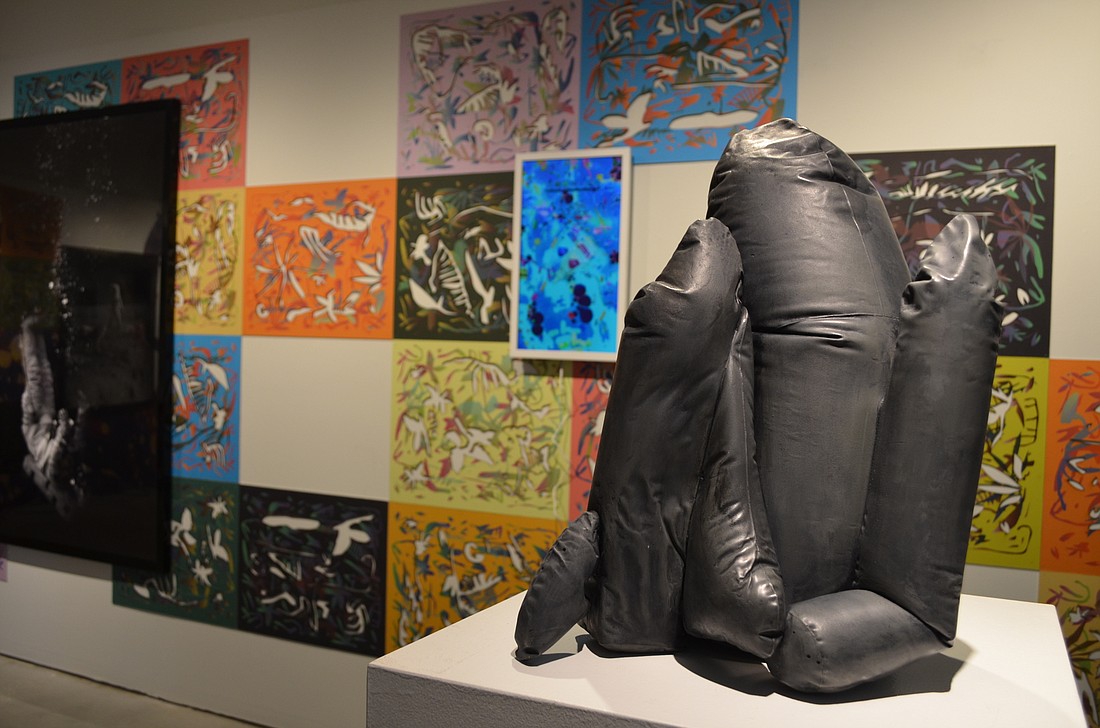- November 23, 2024
-
-
Loading

Loading

Nathan Skiles doesn’t like to collaborate. He prefers to contaminate.
Spectrum II, the latest exhibit he’s curating at Art Center Sarasota, embodies this outlook. In the installation, which is a follow-up to last season’s Spectrum, Skiles makes curation as much a part of the art as the work itself.
“The idea came about last season, when I was offered an opportunity to collaborate,” he says. “But sometimes, I’m a bit suspicious of what that might mean. I thought, ‘What if I changed it to contaminate?’ I wanted to see how artists’ completed individual works affected one another, as opposed to creating something harmonious, together.”
Working with three visual artists, he forages bits of each of their work, presenting it in a way that provokes them to see their work in a new light and viewers to see how they complement and conflict with one another.
To do this, he insisted the artists work in isolation. He didn’t even allow them to know who else was participating. Selecting local artists with whom he was familiar with their styles, he prompted them each with a few topics and left them to their work.
“If you let people work in the dark, you have an opportunity to produce something unforeseen,” he says. “If they worked together, they might manicure it to death and create something really unified. This way, they can be themselves separately and produce conflicts, both visually and in content.”
Skiles, an artist and Ringling College of Art and Design professor, says this approach is a logical extension of his own work, which he describes as piecemeal creations — Frankenstein-esque assemblies of dissimilar, even contradictory fragments pieced together to create something whole.
When we spoke, Skiles was in Belgium, buying antique wallpaper and other fabrics to bring back to his studio to replicate, accent, reproduce, or otherwise alter it into a final work.
He follows a similar approach in Spectrum II, sifting through elements of the participating artists’ work and cultivating them into a new, cohesive whole. The challenge, he says, is to make them work together aesthetically while doing justice to each idea.
“It’s like a person making a soup,” he says. “Some ingredients are too salty, so you add something else. You move ingredients around until you get harmony — the flavor you’re trying to get. And I want to find some way to make them see their work in a new way.”
The artists in this proverbial soup include Shawn Pettersen, who Skiles says has a more esoteric style with a restless, melancholy character.
“There’s a darkness about where we’re at and an optimism about the future, especially in terms of outer space as a frontier,” says Skiles. “So, I wanted to bring in someone whose work was more playful to play against that.”
Cody Berringer’s impressionistic work, dealing in light and color, and incorporating synthetic and natural patterns reminiscent of “Miami Vice,” fit the bill.
Caitlin Burns, the final artist in the exhibit, interprets Florida politics through a pop-culture lens, often using digital elements.
Skiles will use three gallery walls to showcase one artist’s work, with the other two’s work contrasted in front. He hopes viewers will look for common threads in the art, as well as the way in which they differ.
“I want people to first simply experience the exhibit before dissecting it,” he says. “It may elicit more reaction than critique. The goal is to see if we can find some commonality or conflict between these elements, and to see how these artists’ work contaminates each other.”